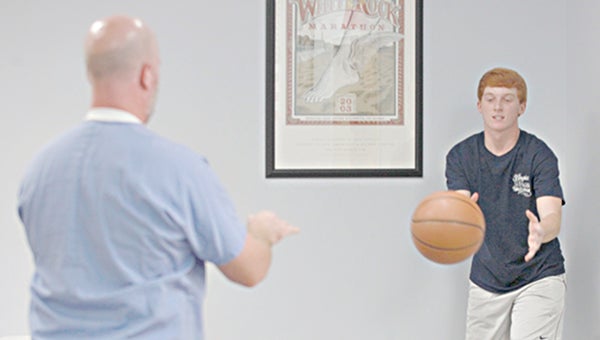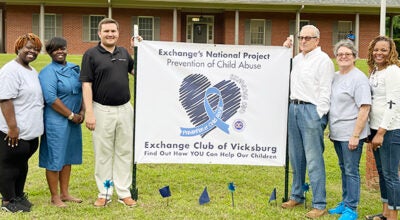For athletes, rehabilitation a long road
Published 9:46 am Wednesday, December 16, 2015

- WORK IT OUT: St. Aloysius football player Brandon Teller rehabilitates his torn ACL muslce with physical therapist Scott Robbins.
Athletes are susceptible to an array of injuries. Basketball players suffer from sprained ankles and knee tendonitis, while baseball and softball players are prone to overuse injuries in their rotator cuffs or elbows.
Rehabilitating from these injuries requires a lot of time away from the sport and athletes have to retrain muscles to move with a particular range of motion. The individual athlete’s personality and motivation often dictates how soon their return to the field will be.
“Sometimes we have to be a governor and slow them down and say ‘look, you’re going to hurt yourself if you get out there too soon,’” said Scott Robbins of Scott Robbins Physical Therapy. “It’s time consuming and a mental issue as well.”
To get athletes back at their normal level of performance, Robbins immediately addresses the injury to calm down inflammation and irritation in the tissue and to get the full range of motion back.
Robbins has his patients mimic their sporting activity as best as he can to make sure they’re performing as well.
“There’s neuromuscular training to teach them to be more stable and more reactive to stresses and that’s basically trying to get them operating at an optimum level,” Robbins said. “You can strengthen a joint all you want but does it translate to being able to run and cut on the field?”
The injury with the most concern from parents and spectators, particularly surrounding football, is a concussion.
Robbins said concussions are indeed a brain injury and the effects can last from a couple of hours to a lifetime if they’ve suffered repeated concussions.
“That’s where the problem lies, that second concussion when you’re totally not recovered from the first one,” Robbins said. “If you get the second impact syndrome, some of those effects can’t be reversed, but generally speaking, that first concussion, those effect can be reversed.”
When the brain is violently moved in the skull, it can damage the brain’s chemistry and tissue. Physical therapists suggest anyone who’s suffered a concussion needs to give their brain a chance to rest, which includes staying away from smartphones, computer monitors and any physical activity.
Symptoms of a concussion can have an emotional, physical or mental effect. Emotionally, an athlete can become irritable or develop mood swings, mentally they can be confused and have trouble concentrating and physically they can become fatigued with blurred vision.
The protocol to get a player back on the field depends on the emotional, mental and physical symptoms they have. A physical therapist will start an athlete on a stationary bicycle for about 10 minutes to see is any symptoms occur. If not, the patient will engage in walking or jogging.
“If it doesn’t spawn on any symptoms you can go on to light-weight training,” Robbins said. “If that’s not spawning on any symptoms they can go on to non-contact training with their sport, and if that’s not causing symptoms they can go into contact drills.”
In his experience, Robbins has seen more football related concussions, but women’s soccer is a strong second, he said.
“There’s a lot of good female athletes and hitting the ball causes a lot of trauma because there’s a lot of instances where they use their head,” Robbins said. “The majority is the male athletes just because of the football, but I’m starting to see a lot more in female athletes.”





